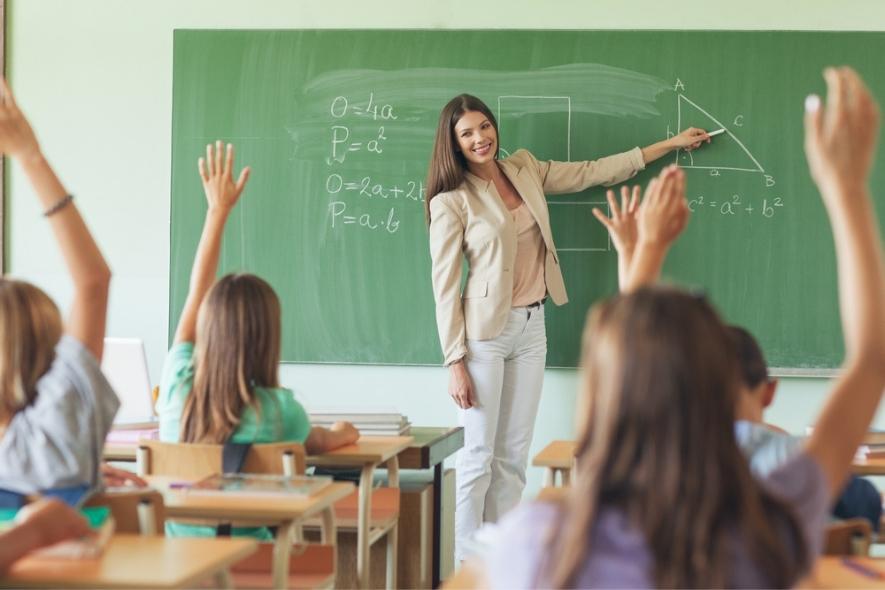Accelerate Learning with Primary Science Tuition Singapore for Young Minds
Accelerate Learning with Primary Science Tuition Singapore for Young Minds
Blog Article
A Comprehensive Overview to the Different Knowing Techniques in Main Science Guideline
The exploration of diverse discovering approaches in primary science direction offers an opportunity for teachers to improve pupil involvement and understanding significantly. By analyzing hands-on understanding techniques, inquiry-based methods, and collective methods, we can determine efficient methods that cater to different finding out designs.

Hands-On Discovering Strategies
Hands-on understanding techniques play a crucial role in primary science instruction, engaging students in active exploration and testing. These methods permit students to connect straight with sensations and materials, promoting a deeper understanding of scientific ideas. By utilizing manipulatives, designs, and real-life experiments, teachers produce an environment where students can observe, hypothesize, and test their concepts.
Such techniques not just boost understanding however likewise cultivate crucial thinking and analytic abilities. When pupils get involved in tasks like developing easy machines, growing seeds, or carrying out chemical reactions, they are encouraged to ask inquiries and look for solutions with their own monitorings. This experiential technique helps to debunk complicated scientific concepts, making them more relatable and obtainable.
Moreover, hands-on discovering promotes cooperation amongst peers, as students typically operate in teams to conduct experiments or share searchings for. This team effort not just enhances their learning experience however likewise develops essential social skills. Inevitably, integrating hands-on strategies in main scientific research instruction cultivates a lifelong love of learning and interest concerning the natural globe, laying a solid foundation for future scholastic pursuits in science and past.
Inquiry-Based Discovering
Inquiry-based understanding is an instructional method that urges students to ask inquiries, explore phenomena, and construct their own understanding of clinical ideas. This method changes the focus from standard teacher-led guideline to a more student-centered experience, where learners take the effort in their instructional trip. By fostering interest, inquiry-based understanding promotes deeper engagement with the material, enabling pupils to discover subjects in a meaningful context.
In method, this approach commonly entails hands-on experiments, monitorings, and critical thinking activities that align closely with the scientific method. Pupils are urged to create theories, layout examinations, and examine information, which grows necessary abilities such as analytical and analytical reasoning. The role of the educator in this structure is to promote expedition, assisting students through the questions procedure while motivating independent thought and collaboration.
Moreover, inquiry-based learning supports a feeling of possession over the discovering process, motivating students to seek understanding actively. This method not just improves understanding of clinical ideas but additionally cultivates a lifelong love for learning, outfitting trainees with the skills essential to navigate an increasingly intricate world.
Collaborative Learning Approaches
Collective understanding methods encourage trainees to take part in significant communications with peers, fostering a shared obligation for their academic end results. In key science instruction, these approaches encourage learners to interact to discover clinical principles, solve problems, and conduct experiments (primary science tuition Singapore). By taking part in team activities, students can leverage diverse point of views, enabling for richer understanding and retention of clinical understanding
One secret element of collective understanding is the focus on interaction abilities. Pupils should verbalize their thoughts, pay attention actively to others, and discuss concepts, all of which are vital proficiencies in both scholastic and real-world contexts. This social interaction not just improves their understanding of scientific principles but also advertises synergy and dispute resolution skills.
When students see the worth of their contributions within a group, they are extra most likely to take possession of their knowing trip. Overall, integrating joint knowing strategies in primary science guideline cultivates a dynamic discovering setting that prepares students for future academic and social obstacles.
Modern Technology Integration in Science
The assimilation of modern technology in primary scientific research instruction improves finding out experiences by giving innovative tools and resources that support different training techniques, consisting of joint learning - primary science tuition Singapore. The use of electronic systems, simulations, and interactive applications permits pupils to involve deeply with clinical principles, helping with a much more hands-on approach to knowing
Online research laboratories, for circumstances, make it possible for students to perform experiments securely and successfully, advertising inquiry-based discovering. These devices can imitate real-world clinical situations, enabling trainees to imagine complex processes that would certainly be hard to reproduce in a standard classroom setting. Innovation fosters interaction and partnership among pupils, as they can share searchings for and work with each other on jobs through on-line platforms.
Additionally, multimedia discussions and academic videos can improve lessons by satisfying varied discovering designs, making abstract ideas more accessible. Information analysis devices additionally equip pupils to gather read here and translate scientific information, reinforcing essential believing abilities. In general, the strategic consolidation of technology in main science instruction not only boosts engagement yet also prepares trainees for a highly advanced culture, outfitting them with vital skills for future clinical endeavors.
Separated Instruction Techniques
Set apart instruction techniques are crucial for addressing the diverse requirements of learners in key scientific research education. These techniques allow instructors to customize their teaching methods to fit varying capabilities, passions, and finding out styles within the classroom. By employing distinguished direction, instructors can produce a comprehensive setting that cultivates involvement and improves understanding of clinical ideas.
One reliable approach is to make use of adaptable organizing, which enables trainees to work together with peers at similar skill degrees or with varying point of views. This technique motivates peer discovering and promotes crucial thinking. Additionally, supplying selections in tasks can empower students, allowing them to pick jobs that reverberate with their rate of interests webpage while still meeting curricular purposes.
In addition, integrating tiered projects is another useful method. Deliberately jobs with differing levels of intricacy, teachers can ensure that all pupils are properly challenged, despite their proficiency. Making use of developmental assessments to determine comprehending further allows teachers to readjust their training approaches dynamically, making sure that each student receives the assistance they need.
Inevitably, executing set apart direction approaches in main science education and learning not only enhances pupil knowing end results but likewise grows a passion for scientific research, preparing students for future academic searches.

Final Thought
In recap, efficient key science guideline requires a complex method that incorporates hands-on knowing, inquiry-based approaches, and collaborative strategies. The integration of modern technology and differentiated direction further deals with varied learning styles, promoting a setting conducive to exploration and vital reasoning. By implementing these methods, instructors can enhance student interaction and understanding, inevitably nurturing a lifelong enthusiasm for scientific research and questions. Such extensive methodologies are essential for developing educated and curious future researchers.
The exploration of diverse learning approaches in go now key scientific research guideline presents a chance for educators to enhance pupil involvement and understanding substantially.Hands-on knowing techniques play a pivotal duty in main science direction, engaging students in energetic exploration and experimentation.Inquiry-based understanding is an educational method that encourages pupils to ask concerns, investigate sensations, and construct their very own understanding of scientific principles.Collective learning techniques empower pupils to engage in purposeful interactions with peers, cultivating a shared duty for their academic end results. In general, integrating collaborative discovering approaches in main science direction grows a dynamic discovering environment that prepares trainees for future scholastic and social challenges.
Report this page